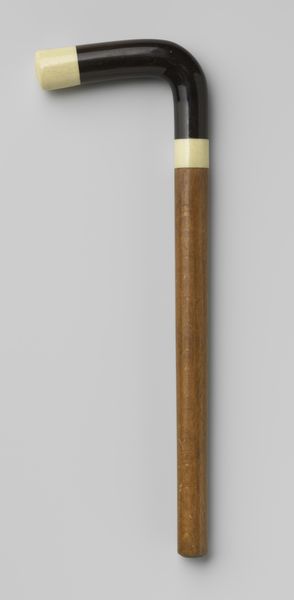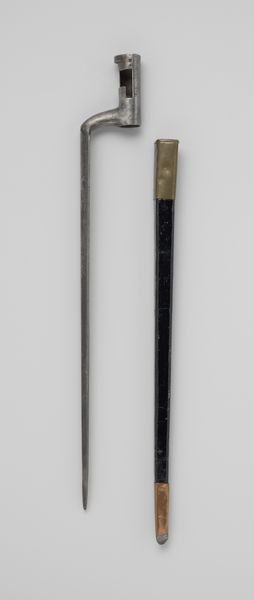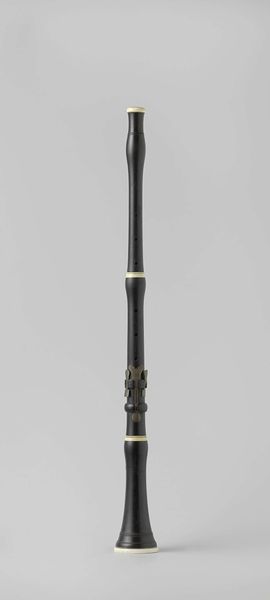
Handvat van hout, waaraan een L-vormige knop van zwart hoorn, boltoelopend, aan een zijde verticale lijnen in reliëf before 1930
0:00
0:00
carving, metal, sculpture, wood
#
carving
#
metal
#
sculpture
#
wood
Dimensions: length 24.8 cm, width 8 cm, height 2.8 cm
Copyright: Rijks Museum: Open Domain
Curator: Let’s consider this cane, dated to before 1930, titled "Handvat van hout, waaraan een L-vormige knop van zwart hoorn, boltoelopend, aan een zijde verticale lijnen in reliëf." It incorporates carved wood and what appears to be a dark horn, possibly attached with metal fixings. Editor: It's striking how simple and elegant it is, almost stark. The contrast between the light wood shaft and the dark, curved horn handle creates a really strong visual. There’s something both practical and subtly assertive about its form. Curator: Absolutely, and it’s important to consider the historical context. Walking sticks like this weren’t just for mobility. They served as signifiers of status, wealth, and respectability within the prevailing social structures. Owning one of these likely came with certain privileges, probably tied to gender, class, or even racial identity. Editor: That's interesting. The knob certainly projects a certain authority. What I'm wondering, though, is about the grip itself. Do those carved lines serve more than a decorative function? Did they make it easier to hold, considering issues like access, especially for the elderly, injured, or disabled at the time? Curator: Functionality would be key, but aesthetic intention cannot be ignored. Walking sticks could demonstrate adherence to a code, signalling group allegiance. Or possibly be interpreted as an active form of self-making in public appearance, depending on how this person felt about those values at the time. It makes you consider the complexities around disability, and the political charge that everyday objects can carry. Editor: It seems more of an affectation in this case. What stands out for me is that visual tension: the horn has such presence, even drama, but the wooden section provides a sobering touch of modesty. That might also say something about the original owner. Curator: Yes, it opens many pathways to explore! Seeing objects like this allows us to reflect not only on design and history, but the performance of identities of that era, and the role power dynamics can play in how the body is represented through objects like canes. Editor: It makes one consider just how carefully the language of these things was being formulated. Thanks for the depth of perspective!
Comments
No comments
Be the first to comment and join the conversation on the ultimate creative platform.













